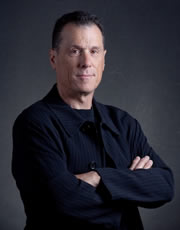 The “art world” is expansive, porous and constantly redefining itself. While art in the current era pushes at the boundaries of historical models, there are still mainstream constructions of circulation and distribution that persist, that may seem antagonistic to some contemporary ideas about art (or citizenship) in general. Nonetheless, the most recognizable trope of art world success is still, most likely, the transactional model of creative commerce. Someone makes something, that object or thing is elevated via either the cult of celebrity or the dominant conditions of the marketplace to a value-added position, then exchanged for remuneration of some kind. In other words, this model or trope follows the basic laws of supply and demand within a capitalist culture. Oddly, this model seems antithetical to the politics of much contemporary art, yet it is one that persists by choice or by necessity (maybe a combination of both).
The “art world” is expansive, porous and constantly redefining itself. While art in the current era pushes at the boundaries of historical models, there are still mainstream constructions of circulation and distribution that persist, that may seem antagonistic to some contemporary ideas about art (or citizenship) in general. Nonetheless, the most recognizable trope of art world success is still, most likely, the transactional model of creative commerce. Someone makes something, that object or thing is elevated via either the cult of celebrity or the dominant conditions of the marketplace to a value-added position, then exchanged for remuneration of some kind. In other words, this model or trope follows the basic laws of supply and demand within a capitalist culture. Oddly, this model seems antithetical to the politics of much contemporary art, yet it is one that persists by choice or by necessity (maybe a combination of both).
There have always been those artists who operate (or attempt to) outside of the system that others aspire to. A polemicist might argue that the art world is fundamentally flawed, that it is simply a business plan masquerading as something more altruistic; a kind of beauty pageant or popularity contest with no real metrics for success, often relying on narratives of genius or immanence to buoy a particular artist or a body of work. This is not meant as a cynical observation, but rather a foundational argument for why artists may choose to opt out of this particular art world, instead imagining a different one.
Martin Herbert’s latest book Tell Them I Said No (Sternberg Press, 2016) is a collection of essays about “various artists who have withdrawn from the art world or adopted an antagonistic position toward its mechanisms.” Giovanni Garcia-Fenech, writing for Hyperallergenic, notes that in his book Herbert profiles ten artists who “fall, roughly, into three categories: those who play with the system, those who struggle against it, and the ones who walked away in dissatisfaction.” He further parses the group into “dropouts, contrarians, and tricksters” and cites a Duchampian lineage as a map by which to track such antagonisms. Garcia-Fenech, who interviewed Herbert at length, finds a broad spectrum of artists for whom “the art world” is (depending on their relationship to it) impenetrable or maddening or simply unable to accommodate certain discourses.
“Art world” is a term that lacks clarity; it means little to some people and means many things to others. It is a kind of virtual geography that one is aware of but much like the sort of fanciful party we might find in a Chaplin film, where a certain segment of the culturati seems to be having a lovely time just on the other side of the gated entry, our experience depends on which side of the gate we inhabit.
In interviewing Herbert, Garcia-Fenech found that one group of artists described in the book “simply found the art world insufficient.” He observes that the artist Charlotte Posenenske “stopped making conceptual, minimal sculpture to become a social worker” and Laurie Parsons, the artist known for her ephemeral installations in the 1980’s, was “mortified by the idea that people were buying her work, responded to an invitation for an exhibition in Germany by choosing instead to work at a psychiatric hospital and with developmentally challenged children.”
Creative people often retreat from situations that might inhibit their ability to remain true to a particular vision. Such retreats are in effect a refusal. In artists such as Agnes Martin, David Hammons or Yayoi Kasuma (who’s work is currently at the Hirshhorn Museum in Washington, DC) we see the gesture of refusal as an act of self-preservation. Thinking about the lives and work of those who, for various reasons, lack the agency or choice to drop out in the first place, (you must be inside to “leave”) outsider artists become insiders; self-displacement from the art world has the opposite of its intended effect.
We talk about “good” and “bad” work as a method for articulating membership in a space whose rules for membership are vague and often opaque. Such seemingly arbitrary and ephemeral rules of inclusion affect one’s ability to become a part of a chosen community, often preventing one from participating in a discourse to which they might contribute. Perhaps the task is not simply to continue to beat on the door of the art world as it currently exists, but rather to create a new one; it is less about leaving the art world than imagining a better version and taking the initial steps to collectively create such a space.
Douglas Rosenberg
Goodbye to All That: Why Do Artists Reject the Art World? by Giovanni Garcia-Fenech, Hyperallergenic, March 7, 2017.
Into the Land of Polka Dots and Mirrors, With Yayoi Kusama by Roberta Smith, New York Times, February 23, 2017.
The Gold Rush, Charlie Chaplin
